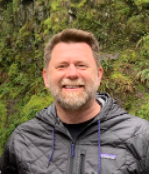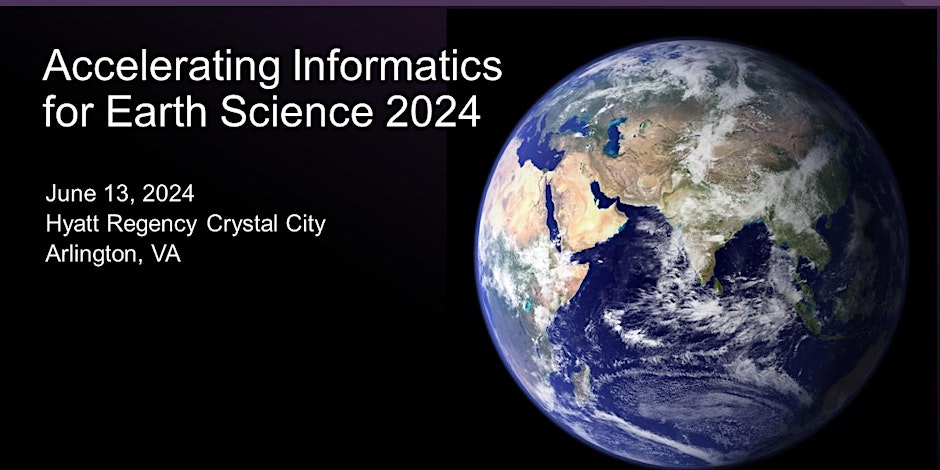
Matthew Fladeland
Airborne Science Manager
Affiliation: NASA Ames Research Center (ARC)
Division: Earth Science Division Office (ASP)
Email: matthew.fladeland@nasa.gov
Phone: (650) 604-3325
Website: https://airbornescience.nasa.gov
Professional Biography
Matt Fladeland is a Research Scientist and manages a Program Office for the NASA HQ SMD Airborne Science Program – see https://airbornescience.nasa.gov Aircraft are a critical element to satellite mission development from instrument development, onorbit calibration and validation activities, and associated Research & Analysis projects. Fladeland’s office leads Advanced Planning, New Technology assessments and development, and provides engineering expertise NASA Airborne flight projects. Matt also serves as Program Subject Matter Expert (SME) for uncrewed systems for NASA, having been involved in the application of UAS to NASA science for 15+ years.
Fladeland started his career with NASA as a Presidential Management Fellow in 2001 at NASA Headquartes in the Earth Science Enterrpise where he worked as a program analyst and assisted with budget and program formulation. He was detailed to NASA Ames in 2002 to work on carbon cycle modeling with Chris Potter resulting in the CQUEST tool. Fladeland was given a permanent appointment in the Ames Earth Science Division and supported formulation and early implementation of the Wildfire Research and Applications Partnership that flew a NASA Altair and Ikhana over the western US in support of wildfire reconnaissance. Following a NASA-sponsored study on the future use of UAS, Fladeland worked with Randy Berthold, Jim Brass, Rick Kolyer and Center leadership in partnership with the Naval Research Laboratory, to bring the NASA SIERRA UAS to Ames in 2006 where the SIERRA-B variant continues to operate. Fladeland was a NASA lead for the Vanilla UAS SBIR development now operated by Platform. In partnership with JPL, NASA Goddard and the University of Costa Rica, Fladeland and team have pioneered the use of UAS for volcano measurements, leading to the acquisition of the NASA Dragon Eyes, and the SBIR development and acquisition of the BlackSwift S2 now operating at NASA Ames and NASA LARC. Fladeland is currently supporting several efforts to demonstrate new observations from the stratosphere through partnerships and as Small Business Innovative Research SubTopic Lead for High Altitude Long Endurance systems. He is NASA monitor for the Swift Engineering Long Endurance UAS and the Electra Stratospheric Atmospheric Carbon Observing System (SACOS).
Fladeland currently serves as Chair of the Interagency Coordinating Committee on Airborne Geophyiscal Research and Applications (ICCAGRA) consisting of agencies across the federal government that operate and or use aircraft for earth science research.
Fladeland also serves on the NASA Standing Review Board for DragonFly, and on the DOE UAS Advisory Board.
Fladeland is a member of the American Geophysical Union.
Education
BA Biology – Gustavus Adolphus College
MFS Yale University, School of the Environment
Research Interests
Fladeland is currently NASA lead on several SBIR technology development efforts related to wildfire observations and networking/communications. He is project manager and NASA lead on a joint project with the USFS project to fly the Swift Engineering solar electric aircraft to provide multi-week observations of wildfires. He is Co-I on a related project to deploy a station seeking balloon to provide last-mile LTE coverage to remote fire camps using the Aerostar Thunderhead balloon with funding the Flight Opportunities Program.
Awards/Honors
- NASA Earth Science Enterprise award – 2002
- NASA Group Achievement Awards
- CASIE – 2010
- Operation Ice Bridge – 2012
- Surprise Valley – 2014
- Marginal Ice Zone Ocean Experiment (MIZOPEX) – 2014
- VEREX – 2018
- SBIR COR team – 2020
- NASA Outstanding Leadership Medal 2020
Select Publications
Leifer, I., Melton, C., Chatfield, R., Cui, X., Fischer, M.L., Fladeland, M., Gore, W., Hlavka, D.L., Iraci, L.T., Marrero, J. and Ryoo, J.M., 2020. Air pollution inputs to the Mojave Desert by fusing surface mobile and airborne in situ and airborne and satellite remote sensing: A case study of interbasin transport with numerical model validation. Atmospheric Environment, 224, p.117184.
Kern, C., Diefenbach, A.K., Elston, J.S., Stachura, M., Dietrick, A., Kelly, P.J., Fladeland, M. and Stock, J.D., 2020, December. Developing a Next Generation UAS Volcano Observation Platform. In AGU Fall Meeting Abstracts (Vol. 2020, pp. NH028-0001).
Leifer, I., Melton, C., Fischer, M.L., Fladeland, M., Frash, J., Gore, W., Iraci, L.T., Marrero, J.E., Ryoo, J.M., Tanaka, T. and Yates, E.L., 2018. Atmospheric characterization through fused mobile airborne and surface in situ surveys: methane emissions quantification from a producing oil field. Atmospheric Measurement Techniques, 11(3), pp.1689-1705.
Pieri, D., Diaz, J. A., Bland, G., Fladeland, M., Madrigal, Y., Corrales, E., … & Abtahi, A. ,2013. In situ observations and sampling of volcanic emissions with NASA and UCR unmanned aircraft, including a case study at Turrialba Volcano, Costa Rica. Geological Society, London, Special Publications, 380(1), 321-352.
Berman ESF, Fladeland M, Liem J, Kolyer R, Gupta M. 2012. Greenhouse gas analyzer for measurements of carbon dioxide, methane, and water vapor aboard an unmanned aerial vehicle. Sensors and Actuators B: Chemical. Vol. 169.
Zaugg, E., Long, D., Edwards, Fladeland M., M., Kolyer, R., Crocker, I., Maslanik, J., Herzfeld, U. and Wallin, B., 2010, May. Using the microASAR on the NASA SIERRA UAS in the characterization of Arctic sea ice experiment. In Radar Conference, 2010 IEEE (pp. 271-276). IEEE.
Diaz JA, Pieri D, Arkin CR, Gore E, Griffin TP, Fladeland M, Bland G, Soto C, Madrigal Y, Castillo D, Rojas E, Achi S., 2010. Utilization of in situ airborne MS-based instrumentation for the study of gaseous emissions at active volcanoes. International Journal of Mass Spectrometry. Vol. 295, Issue 3
Fladeland M, Berthold R, Monforton L, Kolyer R, Lobitz B, Sumich M. The NASA SIERRA UAS: a new capability for earth science investigations. EOS Trans. AGU, 89(53), Fall Meet. Suppl.
Potter C, Gross P, Klooster S, Fladeland M, Genovese V. 2008. Storage of carbon in U.S. forests predicted from satellite data, ecosystem modeling, and inventory summaries. Climatic Change. Vol. 90, Num 3.
Potter C, Klooster S, Hiatt S, Fladeland, M, Genovese V, Gross P. 2006. Methane Emissions from Natural Wetlands in the United States: Satellite-Derived Estimation Based on Ecosystem Carbon Cycling. Earth Interactions. Vol 10. Issue 22.
Fladeland MM, D Sullivan, R Dobosy, T Takahashi. 2005. A suborbital observation system for measuring carbon flux over land and water. AIAA Infotech@Aerospace Conference
Turner W, Sterling E, Fladeland M, Gardiner N, Steininger M. 2003. Remote Sensing for
Biodiversity Science and Conservation. Trends in Ecology and Evolution. 18(6):306-314.





























